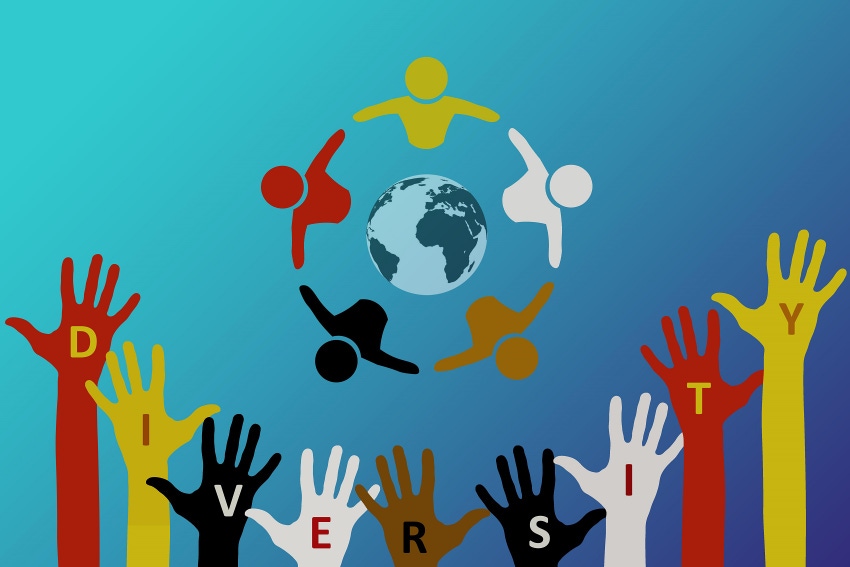Integration, Insight, and AI Will Define DEI’s Next Era
Diversity, equity, and inclusion initiatives are more important than ever. With data, analytics, and intelligent tools, employers can create accountability around these critical goals.

The current labor force is more diverse, civically minded, and in tune with social issues than ever before. As a result, employers can no longer merely talk the talk when it comes to diversity, equity, and inclusion (DEI). They must walk the walk by showcasing an authentic commitment to accountability.
Typically referring to programs within organizations that increase the mix of people and create more equitable and inclusive working environments for everyone, DEI can include initiatives such as increased knowledge, revamped hiring processes, fair promotion pipelines, and inclusive team dynamics. DEI as an industry has been around for decades. While progress has been made toward greater levels of inclusion, it hasn’t accelerated at the pace that many would like.
In today’s tech-driven landscape, organizations should integrate workforce data and AI-based workforce optimization tools to broaden and improve DEI programs. Together, with great care and thought, these solutions have the potential to drive innovation that truly addresses biases and kickstarts the next generation of DEI initiatives to create accountability and real change.
Understanding the Bigger Picture
DEI efforts are not just driven by HR -- they are a collective effort led by those hiring, promoting, and making business decisions. To improve DEI programs, as well as any company-wide initiative, leveraging data is essential. Organizations must start by gathering workforce data that provides detailed visibility into the entire labor pool. This better equips HR and business leaders to understand the intricacies of their entire workforce and determine where DEI efforts will have the greatest impact.
Data also provides critical insights into contingent workers -- a group of non-full-time employees that comprise about 36% of an organization’s workforce but are often overlooked in DEI initiatives. In fact, only 26% of professionals believe that their organization is properly prioritizing contingent DEI. This is a massive oversight. Workforce data provides leaders with insights that indicate how contingent workers impact a company and align with its organizational culture. For example, are contingent workers leaving contracts early? Are they converting to full-time employees? Are they redeploying to other opportunities?
However, it’s critical that organizations prioritize data privacy. This includes facilitating collaboration between their executive leadership team, legal counsel, and HR department to discuss both jurisdiction and cultural considerations for collecting data. It’s also important to clearly communicate data protection protocols to current and potential employees, and ensure data is stored safely with very limited access. Maintaining safe and secure data collection can be challenging, but it is a necessary step in progressing DEI. It gives companies a foundation that supports change, holds them accountable, and empowers their strategic priorities.
Finding Patterns and Evaluating Performance
Despite efforts to create inclusive environments, many companies still struggle with operational processes that uphold traditional stereotypes. By leveraging and acting on advanced analytics and research-based processes, HR and business leaders can create a culture that allows everyone to thrive.
The hiring process is a key area to apply analytical evaluation. For example, upon inspection, applicant and candidate data may reveal unintentional biases like a lack of women proceeding to interview for engineering positions or only individuals of a specific race being hired in one department. When employers integrate advanced analytics in this capacity the numbers are hard to argue with. In addition to reducing biases through data, it’s important to note the role of human-driven solutions like education, awareness, focus groups, and surveys. Providing these tools to leaders helps block their own biases throughout their role as a leader.
Intentionally Investing in AI
Investing in artificial intelligence can be a powerful way to innovate in DEI. AI-enabled workforce optimization solutions collect and break down vast pools of complex data, help source the right talent, design inclusive and strategic programs, and drive better worker experiences. Perhaps AI’s greatest contribution to DEI improvement is its ability to build more inclusive experiences for both new and experienced workers. It enables HR leaders to implement more streamlined processes that guide workers through their onboarding process, in turn minimizing friction and improving efficiency.
However, great thought and care must be given to utilizing AI. Considering it is not inherently neutral, the tool is only as fair as the data it is fed. Left unchecked, it can uphold exactly what we are hoping it will alienate: bias discrimination and an inability to see the value of differences.
Ultimately, AI’s potential for positive impact is as great as its possible pitfalls. To successfully develop these solutions with DEI in mind, leaders must thoroughly discuss where to use AI, which data sets can and have been used, and the diversity of the teams creating the solutions. This is using AI ethically with DEI as a foundation. While AI has amazing potential to strengthen diversity, it must be intentionally designed from the onset to effectively support differences.
Building an Inclusive and Diverse Future
The evolving nature of today's diverse and socially conscious labor force necessitates a genuine commitment and ongoing adjustment from employers to prioritize continual improvement in DEI. By implementing a comprehensive approach that integrates key data, evaluates performance and processes, and invests in intelligent tools, businesses can walk the walk and showcase their continued dedication to DEI.
This three-pronged approach can help organizations identify impactful areas -- including overlooked segments like the contingent workforce -- to eliminate biases and foster a more equitable and diverse environment.
Read more about:
Diversity, Equity, and Inclusion (DEI)About the Author(s)
You May Also Like







